
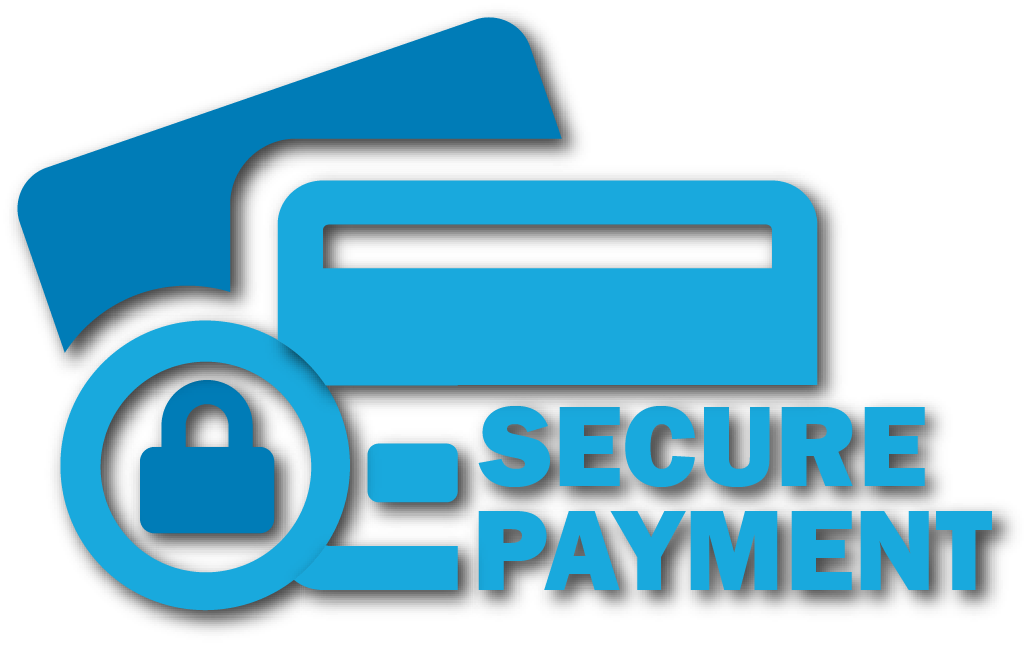
 Faune & Nature
Faune & Nature




La jungle de Tambopata fait partie du puissant bassin amazonien. L’Amazone est l’un des plus longs fleuves du monde et traverse de nombreux pays d’Amérique du Sud. Il existe deux principales zones de jungle au Pérou que vous pouvez visiter, toutes deux également belles et avec de nombreuses attractions à découvrir. La première zone est la zone de Puerto Maldonado et la rivière Madre de Dios. La zone fait partie de la grande réserve nationale de Tambopata ; La réserve couvre environ 274 690 hectares s’étendant des Andes à la Bolivie et est proche du parc national de Manu et du parc national de Madidi.
Selon les estimations actuelles des défenseurs de l’environnement, la région abrite 160 espèces de mammifères et au moins 650 espèces d’oiseaux, l’un des faits les plus surprenants de l’Amazonie. La région abrite 1 200 espèces de papillons, plus de 150 espèces d’amphibiens et de reptiles et plus de 100 espèces de poissons et plus de 10 000 variétés de plantes. L’un des points forts de la réserve nationale de Tambopata est la plus grande lèche d’argile minérale connue au monde. C’est là que des centaines de perroquets et d’aras se rassemblent quotidiennement pour ingérer l’argile détoxifiante. La réserve contient le plus grand bloc d’argile connu au monde ainsi que la plus forte concentration de blocs d’argile. Jusqu’à 17 espèces de perroquets différentes visitent les licks quotidiennement.
Arrivée à Puerto Maldonado, surnommée la capitale de la biodiversité. Transfert par la route jusqu’à notre embarcadère et commencez votre aventure amazonienne par une promenade en bateau de 45 minutes le long de la rivière serpentine Madre de Dios. Le bateau en bois à moteur épouse les méandres des rives du fleuve pour rejoindre votre éco-lodge, Inkaterra Hacienda Concepcion, caché au cœur de la forêt tropicale. Après un court briefing, installez-vous dans votre cabane au toit de chaume située dans la toute première réserve écologique privée du Pérou, créée par Inkaterra en 1975 pour protéger cet environnement sensible. Après le déjeuner, retirez-vous dans votre cabine de luxe rustique pour une sieste ou une balançoire dans votre hamac avant de choisir parmi la vaste gamme d’excursions guidées à la carte avec votre guide expert explorateur Inkaterra. Nous vous recommandons de marcher le long du système de sentiers pour une introduction immersive dans la biodiversité complexe du bassin amazonien et des couches de la forêt tropicale. Frayez-vous un chemin à travers des arbres imposants, comme le Shihuahuaco, pendant que vos oreilles se mettent à l’écoute des croassements, des bruissements et des appels de la faune exotique qui habite ce riche écosystème. Il existe d’excellentes opportunités pour observer les oiseaux et observer une corne d’abondance de la flore. Gardez votre appareil photo à portée de main au cas où des paresseux ou des singes apparaîtraient suspendus à la cime des arbres. En fin d’après-midi, nous vous conseillons vivement de faire notre douce excursion Twilight River pour assister à la transformation de la jungle d’un monde diurne en un monde nocturne : animaux et oiseaux du jour cèdent la place à des espèces spécialement adaptées aux ombres de la nuit. Vous pourrez peut-être apercevoir des engoulevents, des hiboux, des capybaras et de grands caïmans qui se cachent sur les berges. Un dîner d’inspiration amazonienne est servi dans la salle à manger principale de 19h00 à 22h00 où nous vous invitons à déguster un cocktail Pisco Sour gratuit. De retour dans votre cabine confortable, écoutez l’intrigante cacophonie de créatures qui habitent la forêt tropicale entourant le lodge.
La lumière du soleil se faufile à travers les arbres denses alors que les habitants de la jungle se réveillent de leur sommeil. Si vous le souhaitez, rejoignez-les tôt le matin, avec un petit-déjeuner buffet servi à partir de 05h00. Visitez le lac Sandoval ce matin, un lac vitreux situé à l’intérieur de la réserve nationale protégée de Tambopata. Atteints par un sentier de jungle tacheté de soleil, les guides explorateurs d’Inkaterra aiment régaler les visiteurs avec leurs histoires de rencontres inattendues avec des grenouilles venimeuses et des créatures camouflées. Montez à bord d’un canoë en bois creusé pour pagayer tranquillement à travers les mangroves et glisser sur le lac Sandoval, flanqué de palmiers parfaits. Ce lac serein abrite des milliers d’espèces d’oiseaux, la loutre de rivière géante en voie de disparition, des singes hurleurs rouges, des aras à ventre rouge, des anacondas, des tortues à cou latéral et des caïmans noirs. Retour à Inkaterra Hacienda Concepcion à temps pour le déjeuner. Dans l’après-midi, nous vous recommandons de gravir l’exaltant Inkaterra Canopy Walkway et de naviguer sur l’Anaconda Walk. L’Inkaterra Canopy Walkway est un réseau sophistiqué et sûr de 344 mètres (1 135 pieds) de sept ponts suspendus suspendus construits de manière écologique, suspendus entre huit plates-formes d’observation à la cime des arbres au-dessus du sol de la forêt. C’est une occasion inoubliable d’observer la forêt tropicale depuis le toit et de se faire une idée de sa taille colossale. Montez la première tour vertigineuse à 38 mètres (124 pieds) au-dessus du sol, en gardant un œil sur les toucans brillants, les pics, les trogons, les singes et le paresseux à trois doigts. Après la descente, profitez d’une promenade Anaconda de 30 minutes qui suit une plate-forme en bois surélevée de 200 mètres (656 pieds) au-dessus du marais atmosphérique inondé d’aguajales. Dans cet écosystème luxuriant, vous pourrez observer diverses espèces d’amphibiens, d’oiseaux, de mammifères, une flore abondante et des arbres intéressants – il y a même une chance que vous aperceviez des serpents. De retour au lodge, vous pouvez choisir de profiter d’une présentation quotidienne sur la nature à l’Eco Center ou réserver vous-même un soin de spa indulgent. Le dîner à la carte est servi à partir de 19h00.
Le voyage commence à 25 minutes en bateau jusqu’à Gamitana Farm and Creek pour découvrir davantage de mystères de la forêt tropicale. L’Amazonie est une source presque infinie de fruits et légumes exotiques, dont beaucoup ont des propriétés curatives qui soutiennent les communautés locales vivant dans la jungle reculée. À la ferme modèle Gamitana, engloutie par les sons et les parfums de l’Amazonie, vous pourrez voir comment une variété de produits est cultivée par les agriculteurs locaux et déguster des fruits de la forêt de saison. Suivez un sentier de jungle dense sous la canopée virescente pour atteindre Gamitana Creek. Cette crique sinueuse aux eaux sombres abrite une flore et une faune abondantes, avec de nombreux piranhas, caïmans, tortues et oiseaux qui se cachent dans ses eaux troubles et ses berges.
Retour à Inkaterra Hacienda Concepcion pour le déjeuner. Dirigez-vous 35 minutes en amont vers une ancienne plantation de cacao et de caoutchouc. Ce site servait autrefois de centre médical, créé par des missionnaires catholiques dans les années 1950, ainsi que de centre de recherche écologique. Avec plus de 200 espèces végétales différentes trouvées ici, découvrez pourquoi la forêt tropicale est souvent considérée comme la plus grande pharmacie du monde et découvrez de près leurs utilisations et leurs avantages dans cette salle de classe naturelle. Ensuite, profitez d’une excursion relaxante en canoë de 30 minutes pour rechercher des tortues, des grèbes solaires, des engoulevents et des hérons exotiques avant de retourner à votre lodge. Sous le couvert de l’obscurité, aventurez-vous pendant deux heures pour l’excursion Rainforest by Night dans la réserve écologique d’Inkaterra. Armé de lampes de poche, plongez sous les branches des arbres alors que vos sens s’intensifient au son des mouvements dans les sous-bois et des sons nocturnes de la forêt qui apparaissent dans différentes directions autour de vous. Avec votre guide expert Explorer, rencontrez l’activité animale et repérez les espèces qui n’émergent qu’à la tombée de la nuit.
Avec une liste stupéfiante d’animaux sauvages trouvés dans et autour d’Inkaterra Reserva Amazonica – 540 espèces d’oiseaux ont été répertoriées dans le parc du lodge – profitez de votre dernière matinée dans ce pays des merveilles naturel préservé alors que les perruches bavardent dans les arbres et que les mammifères capybara se précipitent entre les orchidées vibrantes -jardins riches. Le départ est à 10h00; en fonction de l’heure de votre vol de départ, le déjeuner peut également être organisé aujourd’hui (des frais supplémentaires s’appliquent). Embarquez sur votre bateau qui vous attend pour le voyage aller-retour de 45 minutes le long de la rivière Madre de Dios qui serpente. Vous ferez une courte visite dans une Butterfly House avant d’atteindre l’aéroport. Le Pérou possède la plus grande variété de papillons au monde, avec 3 700 espèces connues. Beaucoup d’entre eux peuvent être vus à la Butterfly House, qui sert à mettre en valeur la variété, la beauté et l’adaptabilité de ces insectes fascinants. Veuillez noter que ce voyage de quatre jours est un itinéraire suggéré. Les activités et excursions peuvent être choisies à la carte à l’arrivée au lodge et sont susceptibles d’être modifiées en fonction des conditions météorologiques au moment de votre visite.
La préparation de votre séjour est le moment où l’émotion et l’anticipation commencent vraiment. Mais si vous ne passez jamais de temps dans la forêt amazonienne, vous ne savez peut-être pas quoi emporter. Nous avons préparé cette liste pour vous aider avec quelques lignes directrices et suggestions. Cette liste est uniquement destinée à fournir des idées et des suggestions sur ce que vous voudrez peut-être apporter et rien sur cette liste n’est obligatoire.
La forêt amazonienne est proche de l’équateur et la température annuelle moyenne est d’env. 26 °C (80 °Fahrenheit). En raison du fait que le temps change très rapidement, il est crucial d’être bien préparé pour votre visite en Amazonie. Un voyage dans la forêt amazonienne est le voyage d’une vie. C’est le genre d’aventure dont la plupart des gens ne font que rêver. L’Amazonie est connue comme « la plus grande expression de la vie sur Terre ».
Gardez vos bagages à un minimum confortable. Le numéro un sur la liste est d’apporter un passeport valide ! Vêtements Safari à séchage rapide ou coton à séchage rapide, y compris une chemise à manches longues, un pantalon long et un chandail ou un pull-over. Emportez également des chaussures de randonnée ou des baskets avec de bonnes marches (les sentiers de la jungle sont souvent boueux, les chaussures sont donc mouillées et boueuses), un imperméable ou un poncho en plastique. Inclure un insectifuge, des médicaments, des articles de toilette, des lunettes de soleil, de la crème solaire, un chapeau à larges bords, des jumelles, des sandales et un maillot de bain. Il est sage de prendre des vêtements et des chaussettes supplémentaires, car les vêtements ne sèchent pas dans le climat humide de la forêt tropicale.
Pour un voyage d’aventure en Amazonie, tout le monde doit faire ses valises en conséquence. À l’exception des vols internes occasionnels, nous prendrons des canoës, des kayaks, des jeeps, des fourgonnettes et nos propres pieds entre les destinations. Un sac à dos à cadre interne robuste est pratique pour cette forme de voyage ; un sac de sport solide fonctionne bien, et certaines personnes se débrouillent bien avec une valise à roulettes (bien que nous ne recommandions pas vraiment cette dernière). N’oubliez pas que nous devrons peut-être transporter nos sacs sur de courtes distances et si vous pouvez tout mettre sur votre dos, vous serez plus heureux ! En plus d’un sac à dos ou d’un sac marin, un petit sac à dos est conseillé.
 vestes chaudes
vestes chaudes
 Vessie d'hydratation
Vessie d'hydratation
 Chaussettes en laine
Chaussettes en laine
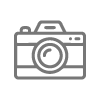 caméra
caméra
 foulard
foulard
 trousse de premiers secours
trousse de premiers secours
 chaussures de randonnée
chaussures de randonnée
 Sacs secs
Sacs secs
 Bâtons de randonnée
Bâtons de randonnée
 crême solaire
crême solaire
 Snack
Snack
 chapeau de soleil
chapeau de soleil
 maillot de bain
maillot de bain
 imperméable
imperméable
 Sandales
Sandales
 insecticide
insecticide
 passeport
passeport
 Vestes décontractées
Vestes décontractées
 papier toilette
papier toilette
 sac à dos
sac à dos
 Bonnet de laine
Bonnet de laine
 lampe frontale
lampe frontale
 des gants
des gants
 des lunettes de soleil
des lunettes de soleil
 casquette
casquette
 l'argent supplémentaire
l'argent supplémentaire
 Pantalon de randonnée
Pantalon de randonnée
Cherchez-vous des réponses à vos questions sur Tambopata Amazon Rainforest Tours? Vous cherchez peut-être des informations sur nos circuits dans la jungle de Tambopata, comment préparer votre voyage en Amazonie ou si la météo affectera votre circuit ?
Nous répondrons ici aux questions les plus fréquemment posées par nos visiteurs. Si vous ne trouvez pas de réponse à votre question ici, veuillez nous contacter et nous ferons de notre mieux pour vous aider.
The Tambopata National Reserve is one of the last easily accessible virgin tropical rainforests in the world. The Reserve, a 274,690-hectare area (678,774-acre), offers a wealth of biodiversity, as well as magnificent natural landscapes. Puerto Maldonado, known as the “Capital of Biodiversity,” is the largest city of the Tambopata region. Overlooking the confluence of the Tambopata and Madre de Dios Rivers, Puerto Maldonado is 400 meters (1,312 feet) above sea level, 650 km (404 miles) from Cusco, and 15 km (9 miles) upriver from the Inkaterra lodge.
The lowland rainforests of Tambopata lie far enough south of the Equator to provide a cooler, drier winter season between May and October. The general weather conditions are warm and humid. In Tambopata, the average daytime high temperature is between 78F and 93F (24C and 31C) The average nighttime low is between 66F and 78 F (20C and 24C). Cold Fronts – May through September Cold fronts from Argentina can sweep into southwestern Amazonia and push daytime highs down to 50° F (9° C) and the nighttime lows to 43° F (5° C). Thus, during that season always be potentially prepared for cold and drizzle. Rainy Months – November through April Be prepared for heavy rain that can continue for hours or days. Around 80% of the annual average 3000 mm rainfall occurs during this season.
Daily commercial flights connect Puerto Maldonado to Lima and Cusco.
Puerto Maldonado, is in the Southern Peruvian rainforest near the Bolivian and Brazilian borders, is the gateway to one of the world’s most remote and extraordinary tropical environments.
Your journey will take you to the heart of the Tambopata National Reserve,where you will experience magnificent beauty in the sounds, scents, colors and solitude of the rainforest.
You will find yourself surrounded by a vast environment, connecting with nature in an entirely new way. As this may be your first rainforest experience, we have prepared a guide to help you enjoy your trip to the fullest. Please take time to review it to enjoy an amazing Amazon experience.
You will have a pre-departure briefing at your hotel the day of your arrival or one day before at 6:00 pm, we will send you one of our tour guides who will explain you all the manu jungle tour program day by day, also he will answer any remaining questions about the tour, then you can finalize the payments of your balance.
300 to 400 soles should be taken for additional purchases on the tour such as handicrafts, soft drinks, moisturizers, beers and tips for the staff (motorcyclist, crewman, cooks and guides).
On our Tambopata Jungle the maximum group size is 10 people per guide. This way everybody can hear what the guide says and the group is not too big to observe animals. If there are 8 to 12 participants on a tour we take one more guide to divide the group in two while walking on the trails, but you may be sharing the bus and/ or boat. If there are more than 12 participants on the same tour we split in 2 groups, each with its own guide and boat.
Our tour guides are very well prepared, they use all of their senses listening for small sounds like the breaking of a branch or fruit falling from the canopy, sniffing for animal odors, scanning the leaves above and below for motion. With this heightened attention and care to make little noise, the chances of observing large and small creatures is greatly increased.
The Tambopata Jungle has the greatest collection of life on earth, and so understandably, many visitors to Tambopata Jungle expect to see lots of mammals. But it should be kept in mind that the story of Tambopata Jungle is that it has high diversity, but low density. So on our trip we will see lots of kinds of creatures but not very many of each kind. But the beauty of this place is how the flora and fauna have evolved the wonderful and bizarre adaptations to thrive in this wilderness. With this perspective, travelers can directly experience and appreciate the infinite variability.
The dry season is a good season to see the birds. The most likely reason for them to come together and eat the clay is because at certain times of the year there are hardly any fruits available for them, just seeds. Seeds in general have a toxic layer, exactly to prevent animals eating them. If the macaws eat them anyway, they have a build up of poison in their stomach. To neutralize the acids that the poison produces in their stomachs, they eat the clay. In the rainy season up until the beginning of the dry season (May) there are many fruits. So the macaws eat fewer seeds and more non-toxic fruits and feel less necessity to eat the clay. Usually it means there are fewer macaws present in the beginning of the dry season. In the middle of the dry season there may be about 100 to 150 macaws visiting the clay lick in one morning, whereas there may only be 10 to 50 at the end of the rainy season/beginning of the dry season.
When is the dry season?: Although it can rain at any time of the year, the Tambopata region tends to be drier from May until October. The rains start up in earnest in November and continue until April with therainiest months usually being November and December. Upsides to visiting during the dry season are trails that aren’t as muddy, little chance of activities being affected by rain, and more macaws and parrots on the clay licks. Downsides to visiting during the dry season are hotter weather, less bird activity on sunny days, more difficulty in finding amphibians, and more travel time on rivers due to low water levels.
Why visit Tambopata during the wet season?: Although you can expect a lot of rain, there will probably be fewer fellow ecotourists (if you like a lot of extra elbow room), it usually rains in the afternoon, it tends to be a bit cooler, and there may be higher bird activity on account of the cloudy weather. The ponds and temporal wetlands that form at this time of the year in the rainforest can also make it easier to find reptiles and amphibians.
When will I see the most animals?: In all honesty, no month is particularly better to see animals than any other. While more parrots and macaws tend to visit the clay lick during the dry season, other animals are encountered with the same frequency no matter what the time of the year. A much bigger factor that comes into play for seeing Amazonian wildlife is the guide’s level of experience and training.
When is the best time to see monkeys?: If you visit lodges such as the Tambopata Research Center, Refugio Amazonas, or Posada Amazonas, you have a very good chance of seeing several monkey species throughout the year. The rollicking calls of Dusky Titis echo from vine tangles, Red Howler Monkeys call from the canopy, and troops of Squirrel Monkeys roam through second-growth near oxbow lakes. Black Spider Monkeys may be a bit easier to find during the wet season because it’s usually easier to locate the fruiting trees they feed on but a good guide will increase your chances of seeing them no matter what the time of the year.
Tambopata Jungle tours can be done with normal fitness by people of all age groups. You should be able to walk medium distances (for about 2 – 3 hours) and on often uneven surfaces.
If you are travelling with children, please let us know in advance for further recommendations, depending on the age of your children.
We don’t have to cover big distances on the walks; we will often walk slowly or stop to observe animals and plants on the way. Sometimes we need to listen, wait and have patience. You only need to bring a day pack on the walks. Night walks are optional and usually take about 1 hour. You are not expected to carry your luggage to the lodge, but help is appreciated.
Due to the humidity and warm temperatures some people may feel a bit weak or faint, but there normally is a short ‘siesta’ at midday and you have the possibility to stay at the lodge instead of participating in a walk. In the rain forest it ‘s important to drink a lot.
A rainforest tour is not a ‘comfort tour’, but if you bring appropriate gear (please see our packing list) you will have an incomparable experience.
Please bring a maximum of 23 kg of luggage per person on your Tambopata Jungle Tour. Especially during the dry season (approx. from June to September) the water levels of the rivers are low; therefore we try to reduce the weight of our boat to make headway better and faster. We recommend to bring a waterproof bag or rucksack for the amazon jungle tours.
During the Tambopata Jungle Tour you can store the rest of your luggage at your hotel in Cusco. In case you have special photo equipment with a considerable weight please let us know in advance.
Our boats are 15 and 16 m long with Yamaha outboard motors. They have wooden seats with cushions and backrests as well as a roof. There are life vests for all passengers. When travelling on the river in the rain you may get wet, so you should have your rain gear at hand. Our boat staff will also provide plastic covers to protect you if it rains. There is no toilet on the boat; please just let your guide know if you need to use the bathroom, so he can stop the boat. And you can make your needs on the banks of the river
Binoculars are essential to a better appreciation and recognition birds and other animals. Binocular and sleeping bag both can be rented in Cusco.
Binoculars are essential for Tambopata Jungle tour: to spot animals and get a closer view of them.
8 x 40, 10 x 40 or 10 x 42 magnifications are recommended.
Quality binoculars (Zeiss, Eschenbach, Leica, Minox und Nikon brands)
The lodge is run mainly on propane. You can charge batteries a few hours a day in the dining room area.
Communications are powered by solar energy and there is wireless internet available at night. We use LED bulbs in public areas at night.
We have electricity three times per day: From 6hrs to 8hrs – From 12hrs to 14hrs – From 17hrs to 22hrs (Referential time).
We provide natural spring water 24 hours per day. Please use the water wisely. We advise you not to drink the water from the river, lake, or any of the taps. Consumable water can be found throughout the lodge from many dispensers and pitchers as well as a variety of other beverages available. All the water that the lodge provides is purified with an ozone treatment. We also suggest that you use this water to brush your teeth. Please turn off the water flow while lathering and soaping up to reduce unnecessary water usage.
Our open and spacious rooms offer lots of natural light and fresh air while providing safe but close contact with the forest environment. Our three-wall rooms allow you to connect with nature, but no worries nothing will enter into your room. The lodge and rooms are 3 meters away from the forest and 1 meter and half above the ground. Each room is also equipped with private bathrooms for your convenience. The use of mosquito netting on each bed is strongly recommended to ensure your comfort and safety. We try to be as eco-friendly as possible so we request that you only change towels when really needed. After 9:30 pm we kindly ask that you lower your voices to allow all guests to enjoy the sounds of the forest at night.
We ask you to keep your valuable belongings and documents in the safe. Do not leave them valuables in plain view. Equally, if you have food or candies please keep them in the safe. Do not leave them outside. This way you will avoid attracting insects and other animals. Ask the lodge manager or guide to inform you about the proper use of the safety box.
According to our environmental policies, we only use Brazil nut biodegradable soap and shampoo which you will find in the bathroom If you are allergic to nuts, please let us know and we will provide you with a lemongrass soap. We wash the towels and bed sheets using biodegradable detergent and we clean the bathrooms with biodegradable products as well.
Thank God we do not have a telephone available in our lodge! In case of emergency, we could get cell phone signal, only at the reception of the Lodges.
This service is only available on sunny days. Please ask for the rate at the lodge. Clothes are hand-washed using White Swipe biodegradable soap and are sun dried in order to protect the environment.
Smoking is allowed in the lobby and bar except at mealtimes. Please do not smoke in your room, the dining rooms, boats, or during activities.
Breakfast time depends on your scheduled activity but starts from 4:30am onwards. Lunch is served at 1:00pm and dinner is served at 7:00pm. Please let us know if you are vegetarian or have any special dietary needs. We do offer a special menu for children.
The Amazon rainforest is a thriving hub of biodiversity but, to see it, you’re going to have to go in deep. Local guides, their senses attuned to the shadows in the trees and the rustle of leaves, will spot secretive animals with ease, especially in the most remote and uninhabited regions of the rainforest. Read on for our guide to Amazon wildlife and where to see it.
It might seem odd that the place with the most biodiversity on the planet isn’t necessarily the best for wildlife watching. There are too many trees and so many places to hide. Our holiday specialists, points out that more than the wildlife, “you go for that sense of being in the Amazon. Just being in that massive rainforest and feeling really really small, it’s quite humbling.”
You’re more likely to hear the Amazon’s inhabitant than see them – the rainforest is surprisingly loud. Like a sudden onset of tinnitus, the constant buzz of millions of insects will be the backing track throughout your holiday here. Howler monkeys can be heard from three miles away and the bare-throated bellbird and screaming piha are two tiny birds with hundred-decibel lungs. Hordes of peccaries (small pigs) can sometimes be heard stampeding through the undergrowth in groups a hundred strong.
Living within the thriving ecosystems of Manu are many species flying, fluttering, and climbing overhead. As the varied landscape offers a unique combination of flora, so does it provide a range of fauna to be witnessed. So far, this includes 222 species of mammals, 99 species of reptiles, 140 species of amphibians, 1,000 species of birds, 210 species of fish, and over 2,300 insects (not including the numerous species that remained unnamed).
Some of the most impressive of the rich and diverse wildlife of Tambopata Jungle are the Peruvian jaguar, macaws, the puma, the ocelot, the giant otter, the giant anteater, the giant armadillo, the Brazilian tapir, a variety of sloths, marsh deer (especially unique as it is actually a savanna animal), and fourteen different species of monkeys.
Monkeys are one of the more common sights for visitors, known for playing in the trees and watching the activity below. Guests can also expect an array of birds and butterflies constantly swooping through the rainforest canopy, and sightings of several unique reptiles and insects are never far. Keep your eyes peeled for one of the rarer jungle mammals, and perhaps leave with the sighting of a lifetime.
After you book your tour, you will receive a detailed packing list with your departure packet. In general, light, synthetic, breathable, quick-drying fabrics provide the most comfort. Long sleeves, a sun hat and long pants are advised to protect from bugs and sun. The lightweight convertible pants that zip off into shorts are a great option as you can convert them to shorts during the heat of the day and back to full length when the bugs are at their worst in the evening. Unlike most destinations, you will probably want to plan a separate outfit for each day. Clothes dry very slowly in the jungle and you may not want to re-wear the perspiration soaked shirt of the previous day! Make sure to bring plenty of sunscreen and insect repellent, as well as any personal toiletries that you need as it’s difficult to find replacements at these remote lodges.
The preparation for your stay is when the emotion and anticipation really begins. But if you never have time spent in the Tambopata jungle, you may not be sure what to pack. We have prepared this list to help with some guidelines and suggestions. This list is only intended to provide ideas and suggestions about what you may want to bring and nothing on this list is mandatory.
OFFICIAL PAPERS:
CLOTHING:
ELECTRONICS:
During limited hours there is a 220 V current available to charge the batteries during certain times of the day. Most current electronic components (for example, laptops, cameras, cell phones, tablets) can be safely charged using 220 power, but check the owner’s manual first.
Take your camera, an extra memory card and your charger with you. There is electricity in the lodges at certain times of the day so that you can charge your devices.
LUGGAGE:
Weight Restrictions:
We do not have weight restrictions for luggage, but we kindly request that each guest limit the weight of their luggage to 23 kg or 50 lb. If your luggage weighs more than this amount, plan to store the extra in Cusco or Puerto Maldonado at our office in our secure storage room until you return from your trip.
Backpack
A backpack is useful to bring your personal belongings to the lodge. Also for the daily excursions, so that you can safely store water, cameras etc.
CLOTHING ACCESSORIES:
OUTERWEAR:
FOOTWEAR:
Shoes and Socks
Almost all excursions are made in rubber boots (provided by the lodge), so you should bring sandals, flip-flops or normal shoes for your time at the lodge. Take an extra pair of socks with you as you can quickly get wet and sweaty feet in the jungle.
TRAVEL ACESSORIES:
OPTIONAL FIELD GEAR:
MEDICATION:
Mosquito Spray and Insect Repellent
If there’s one thing you don’t want to forget, it’s insect repellent, because there are lots of mosquitos in the Amazon! Tip: get a cortisone cream as it helps relieve the urge to itch.
Waterproof Sunscreen
Since the Amazon jungle lies directly on the equator, the sun is very intense. We therefore recommend that you take a waterproof sunscreen with a sun protection factor of 50.
Cosmetics
Take shampoo, soap, toothpaste, toothbrush, deodorant and everything you use in cosmetics with you.
Flashlight
Many lodges offer a jung walk at night, so it’s advisable to take a headlamp or a regular flashlight with you.
Cash for Souvenirs or Tips
If you want to buy souvenirs, order drinks at the bar of your lodge or tip the guides/staff, you will need cash. In some lodges, drinks or dishes from the menu can be paid for by card, in others not (it is best to contact your lodge directly to find out).
Water Bottle
As you will sweat a lot due to the heat in the jungle, you have to make sure to drink enough water. Keep one water bottle per person, because most lodges offer free water dispensers.
THINGS TO CONSIDER:
Please remember to always pack essential items such as your passport, money, eyewear, hiking boots, a pair of shorts/shirt/fleece top/sandals and medications in your carry-on baggage, in case your luggage is delayed.
Cotton is wonderful in warm weather. However, once it becomes wet, it will drain your body heat. Bring wool or synthetics such as Capilene®, MTS® and Thermax®.
Bring clothing that is lightweight and protects you from the sun. Muted earthtone colors are best for wildlife viewing. It is always good to have a lightweight, long-sleeve jacket, especially for the evenings.
Always test your layers before a trip. Your outer layer should fit easily over the inside ones without binding and bunching up.
Make sure boots are broken-in. Bring moleskin for foot treatment. Thin liner socks worn under regular hiking socks may minimize the risk of blisters. The liner sock should be synthetic, not cotton. Test your sock combination before you go on the trip.
Stuff sacks are great for sorting gear. Use different sizes/colors to differentiate contents.
Plastic bags are great for keeping clothing and gear dry. Use Ziploc bags to keep wet clothes separate from dry clothes.
If you wear prescription glasses, use a safety cord and bring an extra pair if possible. Contact lens wearers should also bring an extra set, or bring eyeglasses for a backup.
Around the lobby, you will find racks with rubber boots arranged by size. The largest size we carry is 11. You can use these boots for your walks or outings into the forest. Please remember that when walking inside the lodge facilities and in order to prevent bringing mud inside, you must take out your boots or muddy shoes. We suggest using sandals, clean sneakers, slippers, or socks. During the rainy season the corridors to your rooms get wet, so we recommend bringing light anti-slip slippers to avoid getting your socks wet.
On the first day of your tour we travel over the Andes, where you should have a sweater and wind & waterproof jacket. In the afternoon, reaching the cloud forest temperatures are more pleasant.
The first night you spend in the cloud forest, at 1600 m., you can expect temperatures between 12 and 18°C (53 to 62°F), and reaching the lowland forest you should expect between 26 and 36°C (78 to 95°F) during the day and around 20 to 26°C (66 to 78°F) at night.
However, cold winds from Patagonia may reach Tambopata Jungle and the temperature may lower to about 10 degrees Celsius (50F). These “friajes” are more common during the southern hemisphere’s wintertime (between April and the end of August).
On some occasions we can get a cold front (“friaje”) from the south, this occurs mainly during the months of May to July/ August (dry season). When these winds reach the lowland forest, temperatures may go down as far as 14 or 10°C (50°F), which feels colder due to the humidity in the rainforest.
Here it never rains for long periods of time due to the tropical climate.You will get to do all the activities included on the tour but the order could change depending on weather conditions.
We do hike in the rain and any other weather conditions that nature decides to throw at us. After all, we’re going on adventures!
HEALTH INFORMATION FOR TRAVELERS TO PERU
We suggest that you consult with your primary care physician for a professional medical opinion.
PREPARING FOR YOUR TRIP TO PERU:
Before visiting Peru, you may need to get the following vaccinations and medications for vaccine-preventable diseases and other diseases you might be at risk for at your destination: (Note: Your doctor or health-care provider will determine what you will need, depending on factors such as your health and immunization history, areas of the country you will be visiting, and planned activities.).
To have the most benefit, see a health-care provider at least 4–6 weeks before your trip to allow time for your vaccines to take effect and to start taking medicine to prevent malaria, if you need it.
Even if you have less than 4 weeks before you leave, you should still see a health-care provider for needed vaccines, anti-malaria drugs and other medications and information about how to protect yourself from illness and injury while traveling.
Centers for Disease Control & Prevention recommends that you see a health-care provider who specializes in Travel Medicine. Find a Travel Clinic near you. If you have a medical condition, you should also share your travel plans with any doctors you are currently seeing for other medical reasons.
If your travel plans will take you to more than one country during a single trip, be sure to let your health-care provider know so that you can receive the appropriate vaccinations and information for all of your destinations. Long-term travelers, such as those who plan to work or study abroad, may also need additional vaccinations as required by their employer or school.
Be sure your routine vaccinations are up-to-date. Check the links below to see which vaccinations adults and children should get.
Routine vaccines, as they are often called, such as for influenza, chickenpox (or varicella), polio, measles/mumps/rubella (MMR), and diphtheria/pertussis/tetanus (DPT) are given at all stages of life; childhood and adolescent immunization schedule and the routine adult immunization schedule.
Routine vaccines are recommended even if you do not travel. Although childhood diseases, such as measles, rarely occur in the United States, they are still common in many parts of the world. A traveler who is not vaccinated would be at risk for infection.
VACCINE-PREVENTABLE DISEASES:
Before visiting Peru, you may need to get the following vaccinations and medications for vaccine-preventable diseases and other diseases you might be at risk for at your destination: (Note: Your doctor or health-care provider will determine what you will need, depending on factors such as your health and immunization history, areas of the country you will be visiting, and planned activities.).
RECOMMENDATIONS:
According to the USCDC, it is recommended for all travelers over 9 months of age going to the following areas <2,300 m in elevation: the entire regions of Amazonas, Loreto, Madre de Dios, San Martin, and Ucayali and designated areas (see Map 3-19) of the following regions: far northeastern Ancash; northern Apurimac; northern and northeastern Ayacucho; northern and eastern Cajamarca; northwestern, northern, and northeastern Cusco; far northern Huancavelica; northern, central, and eastern Huanuco; northern and eastern Junin; eastern La Libertad; central and eastern Pasco; eastern Piura; and northern Puno. Vaccination should be given 10 days before travel and at 10-year intervals if there is on-going risk.
RABIES:
Rabies vaccination is only recommended for certain travelers, including:
travelers with significant occupational risks, such as veterinarians
long-term travelers and expatriates living in areas that pose a high risk for exposure
travelers involved in any activities that might bring them into direct contact with bats, stray dogs and cats, wildlife, and other mammals. Such travelers include wildlife professionals, researchers, veterinarians, or adventure travelers visiting areas where bats, wildlife, and other mammals are commonly found.
MALARIA:
Areas of Peru with Malaria: All departments <2,000 m (6,561 ft), including the cities of Iquitos and Puerto Maldonado, except none in the cities of Ica, Lima (and coast south of Lima), and Nazca.
If you will be visiting an area of Peru with malaria, you will need to discuss with your doctor the best ways for you to avoid getting sick with malaria.
Malaria is always a serious disease and may be a deadly illness. Humans get malaria from the bite of a mosquito infected with the parasite. Prevent this serious disease by seeing your health-care provider for a prescription antimalarial drug and by protecting yourself against mosquito bites.
MEDICINES YOU MAY NEED:
The prescription medicines you take every day. Make sure you have enough to last during your trip. Keep them in their original prescription bottles and always in your carry-on luggage. Be sure to follow security guidelines, if the medicines are liquids.
Note: Some drugs available by prescription in the US are illegal in other countries. Check the US Department of State Consular Information Sheets for the country(s) you intend to visit or the embassy or consulate for that country(s). If your medication is not allowed in the country you will be visiting, ask your health-care provider to write a letter on office stationery stating the medication has been prescribed for you.
OTHER ITEMS YOU MAY NEED:
Iodine tablets and portable water filters to purify water if bottled water is not available. See A Guide to Water Filters, A Guide to Commercially-Bottled Water and Other Beverages, and Safe Food and Water for more detailed information.
Sunblock and sunglasses for protection from harmful effects of UV sun rays. See Basic Information about Skin Cancer for more information
Antibacterial hand wipes or alcohol-based hand sanitizer containing at least 60% alcohol.
TO PREVENT INSECT/MOSQUITO BITES, BRING:
Lightweight long-sleeved shirts, long pants, and a hat to wear outside, whenever possible.
Flying-insect spray to help clear rooms of mosquitoes. The product should contain a pyrethroid insecticide; these insecticides quickly kill flying insects, including mosquitoes.
Bed nets treated with permethrin, if you will not be sleeping in an air-conditioned or well-screened room and will be in malaria-risk areas. For use and purchasing information, see Insecticide Treated Bed Nets on the CDC malaria site. Overseas, permethrin or another insecticide, deltamethrin, may be purchased to treat bed nets and clothe
See other suggested over-the-counter medications and first aid items for a travelers’ health kit.
AFTER YOU RETURN HOME:
If you are not feeling well, you should see your doctor and mention that you have recently traveled. Also tell your doctor if you were bitten or scratched by an animal while traveling.
If you have visited a malaria-risk area, continue taking your antimalarial drug for 4 weeks (doxycycline or mefloquine) or seven days (atovaquone/proguanil) after leaving the risk area.
Malaria is always a serious disease and may be a deadly illness. If you become ill with a fever or flu-like illness either while traveling in a malaria-risk area or after you return home (for up to 1 year), you should seek immediate medical attention and should tell the physician your travel history.
Important Note: This document is not a complete medical guide for travelers to this region. Consult with your doctor for specific information related to your needs and your medical history; recommendations may differ for pregnant women, young children, and persons who have chronic medical conditions.
Expect bugs in the Amazon. The warm, humid environment provides a breeding ground for mosquitoes and other troublesome insects. That said, many travelers are surprised that the bugs are not nearly as prevalent as they expect. The diverse bird populations near most Amazon lodges help to keep insect populations in check and travelers are often too busy enjoying the sites and sounds of the jungle to be bothered by the lingering insects that remain.
Mosquito breeding is heavily dependent upon the weather, however, and the number of insects can change dramatically from one day to the next, depending upon the amount of standing water and other weather factors. It is always a good idea to take reasonable precautions to insure you have the most enjoyable experience. Use insect repellent with DEET and wear long sleeves and long pants whenever possible, particularly in the evening and early morning when insects can be at their worst. The lodges generally provide mosquito netting for you to tuck in around your bed and most travelers find that portable netting for hiking is not necessary (though bring it along if you are particularly sensitive to bugs!).
Macaw Clay Licks
See some of the most amazing amazon rainforest birds. Large flocks of macaws and parrots congregate around exposed sections of riverbeds, called clay licks, to nibble at the clay and socialize. Why do the birds eat the clay? Some scientists theorize the clay contains sodium and other minerals that they may need but don’t get from their food. Others think that the birds ingest the clay to help neutralize the toxins they eat from certain plants. To observe these beautiful birds in clay-eating action, guides may point out clay licks along the river while traveling in boat or take you to a protective dry-lead camouflage covering.
Oxbow Lakes
Oxbow lakes are unique habitats to Peru’s southern Amazon basin region. These lakes are formed as bends in the river are slowly cut off from the main water flow over hundreds of years. Get an early start to your day and explore the lake waters aboard a paddle-driven boat. With luck on your side, caimans, several species of birds, and resident families of giant otters are among the wildlife you can see!
Canopy Tour
Gain a new perspective of the Amazon on a visit to the jungle canopy. The startling diversity in flora and fauna varies not only by habitat but also by distance from the rainforest floor. The canopy bridge at the Inkaterra Reserva Amazonica jungle lodge swings 31 meters (103 feet) above the rainforest floor.
Jungle Walk
Guided jungle walks are a chance to soak in the surrounding nature you at a slower. Some trails meander old-growth forests of towering trees, others explore shin-deep waters. Along the way, your expert guide will point out hidden wildlife and share knowledge about the Amazon rainforest vegetation.
Local Community Visit
Many jungle lodges work closely with local communities. Posada Amazonas is a popular jungle lodge near the Tambopata National Reserve that’s owned in partnership between the native Ese’eja community and Rainforest Expeditions. Visiting a local farm or traditional community clinic offers great insight to how locals live in harmony with the Amazon.
The Tambopata National Reserve, Peru
The Tambopata National Reserve is found in southern Peru. This can be reached after only 30 minutes of travel time from the rainforest gateway town of Puerto Maldonado. This section of Peru contains the most clay licks in the Amazon. These are fantastic places to see colorful macaw parrots gathered at the clay. You can also find beautiful oxbow lakes, which are sometimes home to giant river otters.
The Tambopata National Reserve covers around 274,690 hectares of lowland Amazon Rainforest. This protects the lower section of the Tambopata River following its descent from Lake Titicaca down the Andes.The reserve contains some fantastic animals and plants. These include the tall emergent trees of Brazil nuts, mahogany, and cedar.
Spot various toucans, macaws and other parrots flying over the forest. These are best seen at clay licks and canopy towers, which you can find at certain Tambopata Rainforest lodges.
The lodges in the Tambopata rainforest provide some fantastic trails, lakes and clay licks. And you can find a variety of rainforest animals. Enjoy seeing herds of peccary, several different monkeys and giant river otters. You even have a chance of spotting jaguar from deep lodges. Our favorite Tambopata lodge is the Tambopata Research Center. This lodge even offers a 20% chance of spotting wild jaguar.
For another favorite animal to find, a great lodge for seeing giant river otters is the community-owned Posada Amazonas Lodge. This is located in connected rainforest next to the reserve. To give an example of the Tambopata Reserve and surrounding rainforest, here’s a table to show the chances of seeing different Amazon Rainforest animals.
As recommended lodges to provide examples, the table contains information for:
The Manu National Park, Peru
The Manu National Park covers an impressive 1.5 million hectares. The area protects the entirety of the Manu River. Manu continues to set records for wildlife richness. This is not only because of its large area, but also because it includes lowland rainforest and forest on the Andes.
Although not permitted in the national park itself, visitors can visit connected rainforest. This is the rainforest surrounding the park known as the Reserved Zone. Enjoy some large macaw clay licks where hundreds of colorful macaw gather at the clay. You can also see a beautiful lake with giant river otters and different monkeys
STEP 1
STEP 2
STEP 3
STEP 4
Unfortunately, the 5% charge is completely out of our hands. This fee does not go to us, but to PayPal and VISA. There is really no way around it.
You can book your Amazon tour at any time and generally the earlier you book, the better, especially during dry season. Some lodges fill up 6 months in advance or more during the most popular dry season departures (esp. June – August). During the wet season, travelers can often book last minute, though 2-3 months notice is still recommended to give you time to arrange vaccinations, international flights, etc. We also recommend that you wait to book your international flights until after your tour is confirmed. The sooner that we arrange your tour, the sooner that you can take advantage of flight deals as they become available.
We are often able to accommodate last minute travelers (some even departing in less than one week!!), so give us a call and we will do our best! For last minute bookings, it helps to be flexible and organized. Your first choice tour may not be available for your selected dates, but your trip coordinator can probably recommend some other similar options that would be equally interesting! Many lodges will not hold spaces less than 30 days before departure so for last minute bookings, you may be asked to send your registration form and trip payment in right away to secure your spaces.
We operate amazon tours from Manu National Park every single day with no fixed departure dates – accommodating your schedule, not ours!
Please contact us with your idea for a private Amazon tour, including the group size and telling us which one of our tours would you like to use as a base for creating your desired experience.
The cost depends on this information.
We can make customized trips up to 4 days in Manu National Park, Tambopata Jungle. You can plan a mixture of lodging for the more adventurous format. We have specialized bi-lingual guides, with years of experience on birdwatching tours, group and private tours.
All food, water, and camping equipment will be provided.
Cancellations done 16 days or more before the departure date will be 100% refunded when is not a special offer (rate) minus 5% for administrative expenses.
Cancellations within 15 days before the departure date will be billed at full fare.
Refunds will not apply under cancellations of air, road, lake, river, or trail travel due to changes in airline schedules, bad weather conditions, civil or government strikes, acts of God or government, acts of terrorism, force majeure (including world or local health conditions), criminal activity, or sickness.
“The Amazon is definitely family friendly but I would not be inclined to take kids under about 6. Maybe not even younger kids aged 6-8, you wouldn’t want to put them on those very long journeys, but some of the lodges are better set up for families. I went to a lodge in the Tambopata Reserve and we had a fantastic time because it’s not that far away, it’s not right on the river bank, they have very good dedicated guides for kids and trails set up for kids, they provide welly boots for kids and they’ve got a games area for kids.”
The Amazon Rainforest tours are an excellent choice for kids who are interested in wildlife and the outdoors. Spotting colorful macaws flying overhead, listening to howler monkeys roar in the trees, and climbing into the rainforest canopy inspire the wonder in all of us and can be particularly fascinating for children. Most lodges do not have electricity so they are not a good choice for kids who rely on television and video games for entertainment. Some lodges require much longer transfer times to reach or are particularly remote and rustic. Ask your trip coordinator for recommendations. Some vaccinations and malaria preventatives are also recommended for these tours. Some of these cannot be given to children under a certain age/ weight, though alternatives are generally available. Ask your pediatrician for advice before booking your tour.
The food at all of the Amazon lodges is excellent, fresh, and authentic. Generally, the lodges seek to provide a mixture of local and international cuisine. Jungle fruits, vegetables, and juices provide a uniquely fresh flair that is unmatched in more temperate climates. Although menu choices are limited at the most remote lodges, all can accommodate vegetarians or other common dietary preferences if sufficient notice is provided.
It will depend on exactly where in the Amazon you visit, as different countries will have different types. Some trips may cross borders, so double check with your Trip Planners to confirm exactly which countries you’re visiting and what their power requirements are. Generally, you can expect the following:
Peru uses 220 volt, 60 cycle electricity. Travelers will require a voltage converter for 110 volt devices. Plugs are typically the 2 pronged flat type found in the US, though some facilities have been noted to use the 2 rounded prongs instead.
Like all of our tour leaders, the Amazon guides are exceptional! They are fluent in English (some tours also have a second native guide who may only speak limited English) and generally speak the local jungle language(s) and Spanish as well. They are trained in biology or ecology and specialize in jungle guiding, giving them a unique ability to spot elusive wildlife. Some lodges, employ both a native guide from the local area and a biologist guide with formal training.
We have had travelers of nearly every age on our Amazon tours. These trips commonly attract multi-generational families as well as young honeymooners or adventurous single travelers. Travelers of any age can likely find an Amazon option where they will fit right in.
Absolutely! We arrange small group tours (6 or less) so these tours are a great choice for single travelers interested in getting to know a small group of other travelers. Some lodges are easier to coordinate for single travelers than others.
Tour rates do not include international flights. We find that it is usually less expensive for travelers to book these separately and this also allows you the flexibility to choose the schedule and routing that is most convenient for you. You are welcome to book these on your own, or we can certainly help you arrange these flights with an airfare consolidator who specializes in South America flights.
Tips are not required on any of our tours. However, it is customary in Latin America to offer a small tip for exceptional service. Tipping amounts vary widely, though some travelers report that $2-$10/ day for your guide is common. Other travelers opt to bring small gifts from their home to give to service providers along the way.
The short answer is yes. Especially if you are a nature lover, the Amazon is one of the most fascinating places in the world. It is home to at least 10 percent of the world’s biodiversity. In fact its residents include 40,000 plant species (16,000 types of trees) and more than 5,000 animal species. However, if you are only in Peru to see ancient ruins and don’t really like being immersed in nature – it’s probably not the place for you.
The Amazon Rainforest is between 3-3.2 million square mi (7.8-8.2 million square km) in size. It is the largest rainforest in the world, and 80 percent of its land is covered by forests. To put into perspective, the physical size of the Amazon is roughly equivalent to the size of the entire lower 48 states of the United States.
13 percent of the entire Amazon rainforest is located in Peru. 60 percent of the Amazon rainforest is in Brazil, and 10 percent in Colombia. That being said, 60 percent of Peru is covered in the Amazon rainforest.
Yes, the Peruvian Amazon is a safe tourist destination; but like anywhere you should practice precaution. Stay with your tour group at all times and wander only within the property of your lodge in your free time. Do not join tours from the streets or follow people/guides you don’t know. Also, the rainforest is full of wild animals, so be sure to watch your step and be mindful of where you place your hands.
No, unfortunately, we do not have Kosher certified food in Puerto Maldonado, the closest town from where we get our supplies, like fresh produce, meat and fish, and dairy products.
Can we get fresh produce, grains and fruits?
Yes, we can get vegetables such as tomatoes, cucumbers, sweet potatoes, broccoli, zucchini, eggplant, cabbage, lettuce and spinach. We can get uncut and unpeeled, fruits such as apples, pineapples, papaya, tangerines, oranges, bananas, and watermelon. And grains like rice, wheat, lentils, yellow beans, split peas, garbanzo beans and quinoa. These will make a great salad; please feel free to ask our cook the combination you would like for a fresh salad. Baked potatoes and sweet potatoes are popular.
Can we get scaled fish like halibut, salmon, sea bass or flounder?
No, the fish we get comes from local fish farms and it is a large catfish from the region, which comes already filleted and packed. The knives and procedures used to cut the fish are not Kosher certified.
Can we get packed cereal, granola bars or bread for breakfast?
Yes, we can get these packed products for breakfast and/or snacks. We do prepare fresh bread every morning, you are welcome to see the process and decide if you would like to try it.
Can we get certified dairy products?
We cannot get Kosher certified products like milk, butter or cheese. Can we get fresh eggs? Yes, we can get local fresh eggs. Do we have new pots and utensils to cook the meals? We do not have new utensils. We can buy them for you and your group. The fee per person is US$70. You are welcome to bring your own utensils and the cook will use them and return them when you depart.
In case of emergencies we have a first aid kit that is equipped to deal with most cases that may reasonably arise in the area. Our guides are all certified by the Red Cross, which means they are prepared to deal with foreseeable emergencies (broken bones or snake bites, for example) but not complex emergencies (such as appendicitis). For snake bites, unheard of at Tambopata so far, we have extractors and an anti-venom at the lodges. In case of evacuation, we need to travel by boat to Puerto Maldonado. During the day, evacuations take about 20% less time than our regular boats. During the night, evacuations take about 30% more. In Puerto Maldonado, there is access to a state clinic.
Vous voulez un aperçu approfondi de ce voyage? Essential Trip Information fournit tout ce que vous devez savoir sur cette aventure et plus encore.
Afficher les Informations Essentielles sur le VoyageLe meilleur moment pour visiter le Pérou est pendant la saison sèche, entre mai et novembre, lorsque le temps est sec et lumineux, avec des précipitations plus fréquentes entre novembre et avril.
 JANVIER
JANVIER
 FÉVRIER
FÉVRIER
 MARS
MARS
 AVRIL
AVRIL
 PEUT
PEUT
 JUIN
JUIN
 JUILLET
JUILLET
 AOÛT
AOÛT
 SEPTEMBRE
SEPTEMBRE
 OCTOBRE
OCTOBRE
 NOVEMBRE
NOVEMBRE
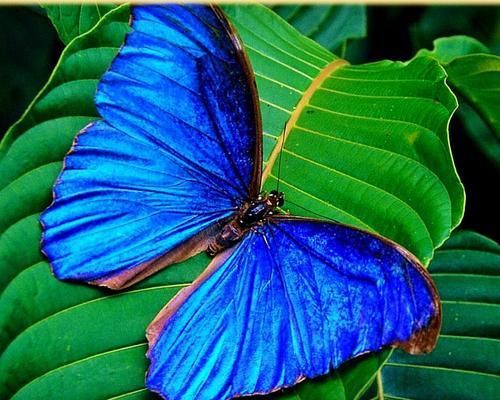 DÉCEMBRE
DÉCEMBRE
Un minimum de $ 750 USD par personne est requis pour réserver cette visite, et le solde sera payé à l'arrivée au Pérou, au bureau de Cusco.
Contactez votre responsable des réservations pour plus d'informations.
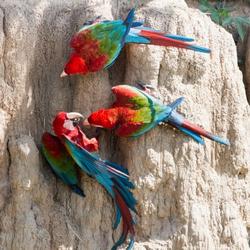
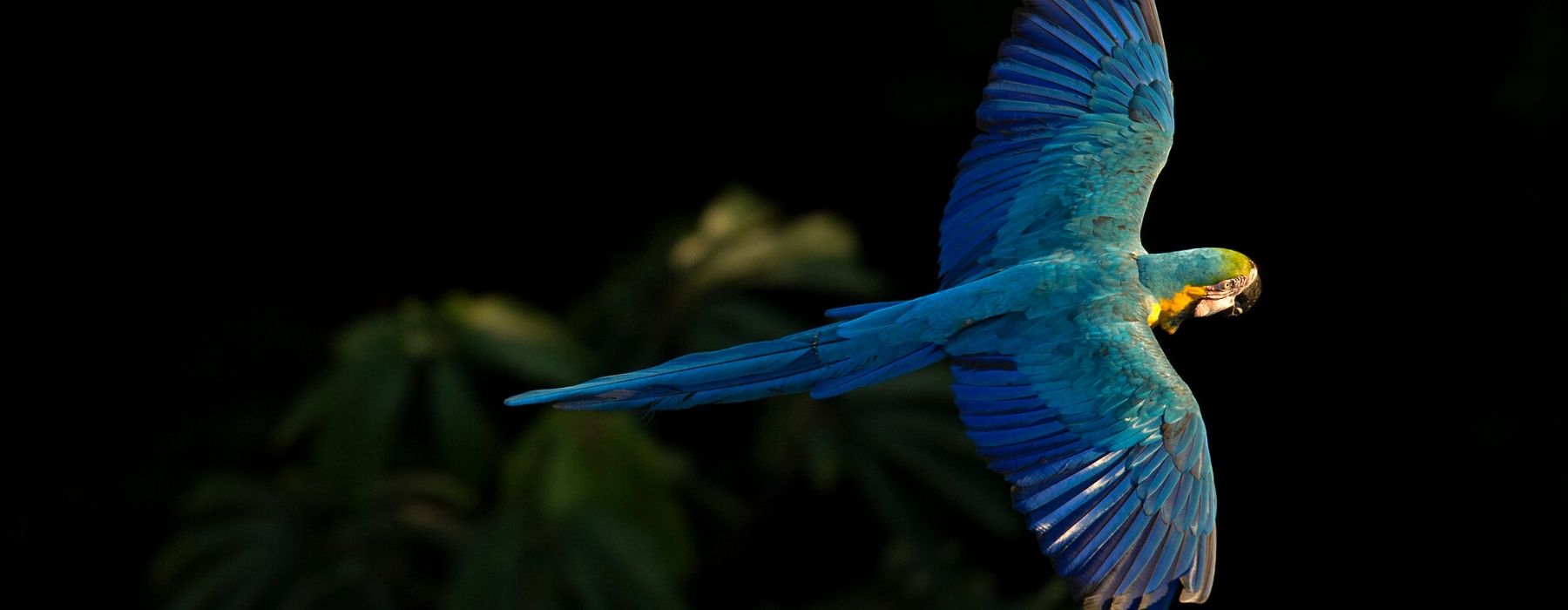
Ressentez le pouvoir réparateur de la nature, détendez votre esprit dans un lieu plein d’énergie et de vie, déconnectez-vous de la frénésie trépidante de la vie quotidienne.

Les vaccins recommandés pour les voyageurs en Amazonie comprennent souvent l’hépatite A et B, la typhoïde et la fièvre jaune. Consultez votre médecin quatre à six semaines avant votre voyage pour connaître les dernières recommandations et exigences relatives à votre destination. On vous conseillera peut-être de commencer à prendre des pilules antipaludiques à cette époque.
Le Center for Disease Control des États-Unis est une excellente source d’informations détaillées sur la prévention des maladies liées aux voyages.
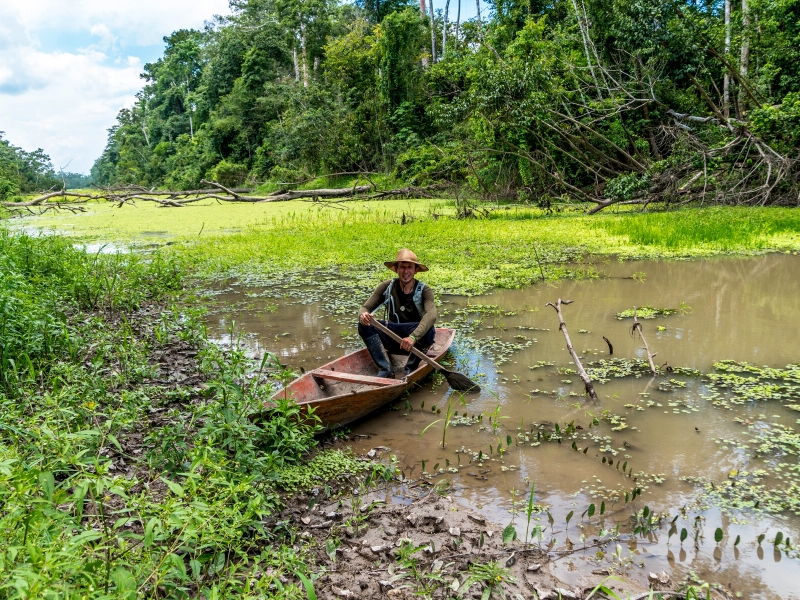
Pour rester en sécurité en Amazonie, les voyageurs doivent manger raisonnablement, s’habiller de manière appropriée et appliquer un répulsif pour minimiser le risque de se faire piquer par les moustiques, et prendre les vaccinations, les médicaments et les précautions nécessaires, comme recommandé par votre médecin.
Lorsque vous faites de la randonnée, du canoë et d’autres activités dans la jungle, vous devez toujours rester avec votre groupe et suivre les conseils de votre guide. Nous vous recommandons également de laisser vos bijoux, montres et appareils électroniques de valeur à la maison et, si possible, d’utiliser une ceinture porte-monnaie et tous les coffres-forts à votre disposition pour stocker les passeports et les documents importants.
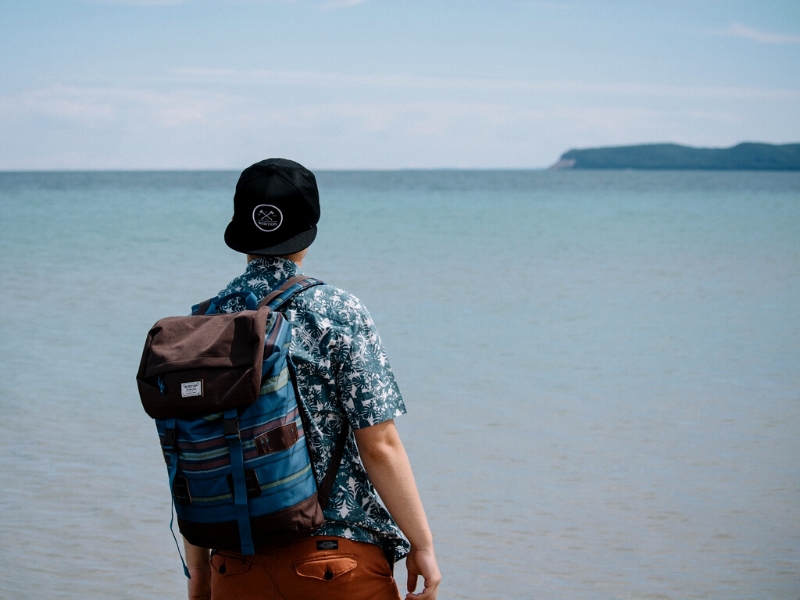
Apportez des chaussures de marche confortables, des pantalons longs légers et des hauts à manches longues, un chapeau à larges bords, de la crème solaire, des chaussettes supplémentaires, un anti-moustique au DEET, des maillots de bain et bien sûr des ponchos imperméables à capuche pour protéger de la pluie votre appareil photo, avec chargeur et batteries supplémentaires lors des excursions. Les jumelles sont très importantes pour profiter de la faune. N’oubliez pas d’inclure quelques articles que vous pouvez donner aux habitants (t-shirts, stylos et papier sont particulièrement prisés, et peut-être des chocolats ou des bonbons pour les petits enfants). Lors des repas en salle à manger, nous demandons à nos hôtes de porter des vêtements décontractés et des chaussures. Nous fournissons des bottes en caoutchouc pour les excursions dans les zones humides et les atterrissages humides, et nous vous recommandons de prendre des chaussures de marche confortables.
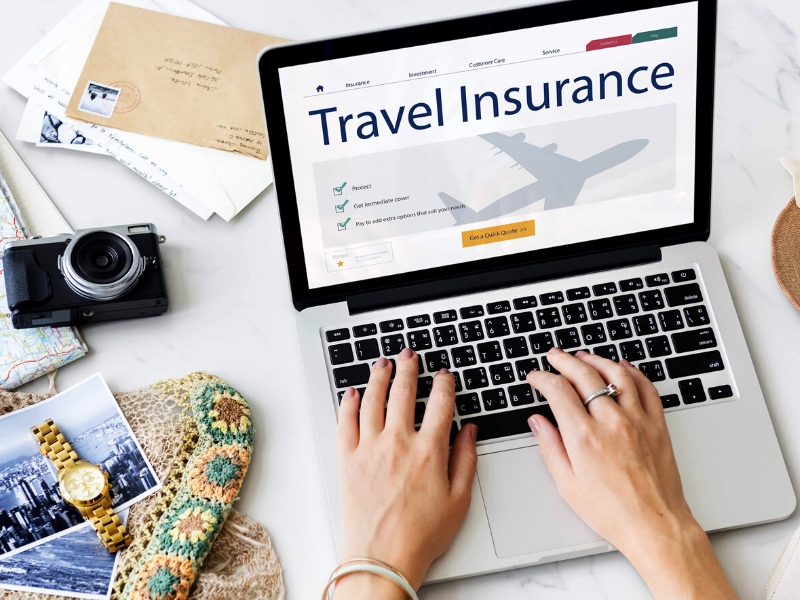
Il est fortement conseillé aux voyageurs de souscrire une assurance annulation de voyage qui remboursera le coût des billets d’avion et autres paiements de voyage non remboursables. Une assurance médicale internationale, perte de bagages et retard est également recommandée. Malheureusement, si vous manquez la visite Amazon en raison d’une annulation de vol liée aux conditions météorologiques, nous ne rembourserons pas le coût de la réservation car les annulations de vols sont indépendantes de notre volonté et nous devons respecter nos horaires.
Pour entrer dans les pays de la forêt amazonienne, vous aurez besoin d’un passeport valide. Cependant, les visiteurs de la plupart des pays n’ont pas besoin de visa, à condition que leur visite dure moins de 90 jours. Si vous prévoyez de rester plus longtemps, vous devrez demander un visa dans votre pays d’origine.
Oui. La nourriture est tout simplement de classe mondiale. Nos invités apprécient un menu de plats péruviens frais et délicieux (avec un peu d’influence continentale). Petit-déjeuner, déjeuner, dîner chaque jour promet d’être un festin culinaire pour les sens, accompagné de vins sud-américains sélectionnés ou peut-être d’un jus fraîchement pressé. Si vous avez des demandes diététiques particulières, veuillez en informer Andean Great Treks au moment de la réservation, ou au moins 30 jours avant le début de l’Amazon Tours, car certains articles peuvent devoir être commandés à l’avance sur les marchés locaux. Tous les efforts seront faits pour répondre aux besoins diététiques spéciaux et pour répondre aux demandes spéciales, sous réserve de la disponibilité d’un produit donné au Pérou.
La faune amazonienne est abondante, mais il faut savoir où chercher. De nombreuses créatures sont fatiguées des humains et souvent camouflées. Nos guides naturalistes experts vous aideront à repérer et à identifier les animaux grâce à leurs connaissances locales, leur expérience de suivi, leur remarquable vue d’aigle et leurs oreilles entraînées.
Beaucoup peuvent même imiter les cris d’oiseaux et de singes pour les attirer ! En général, plus vous passez de temps dans la région et plus vous pouvez voyager profondément dans la forêt tropicale, plus vous avez de chances d’apercevoir des animaux sauvages. Un bon ensemble de jumelles sera également très utile.
Prendre de la vitamine B12 est un moyen plus naturel d’acquérir une certaine résistance aux moustiques. Il peut être ingéré sous forme de vitamines ou présent dans certains aliments riches en vitamine B12 tels que les crustacés (palourdes, huîtres, moules), le poisson, les crustacés (crabes), les produits à base de soja (lait, tofu), les céréales de son, la viande rouge (agneau , bœuf), du lait faible en gras, certains fromages et des œufs. Nous suggérons de prendre des suppléments de B12 environ 2 à 3 semaines avant d’arriver dans la forêt amazonienne.
Oui. Nous accueillons chaleureusement les familles avec enfants âgés de 7 ans ou plus. Nos lodges sont confortables pour recevoir des familles avec leurs enfants. Un logement supplémentaire pour un enfant est disponible dans certains Lodges. Nos guides naturalistes sont très sympathiques avec les enfants et tout notre personnel fournira les soins nécessaires à votre famille. Nous proposons également des sentiers de survie dans la jungle, des expériences de pêche avec remise à l’eau de piranhas à Iquitos et des menus de repas pour les enfants.
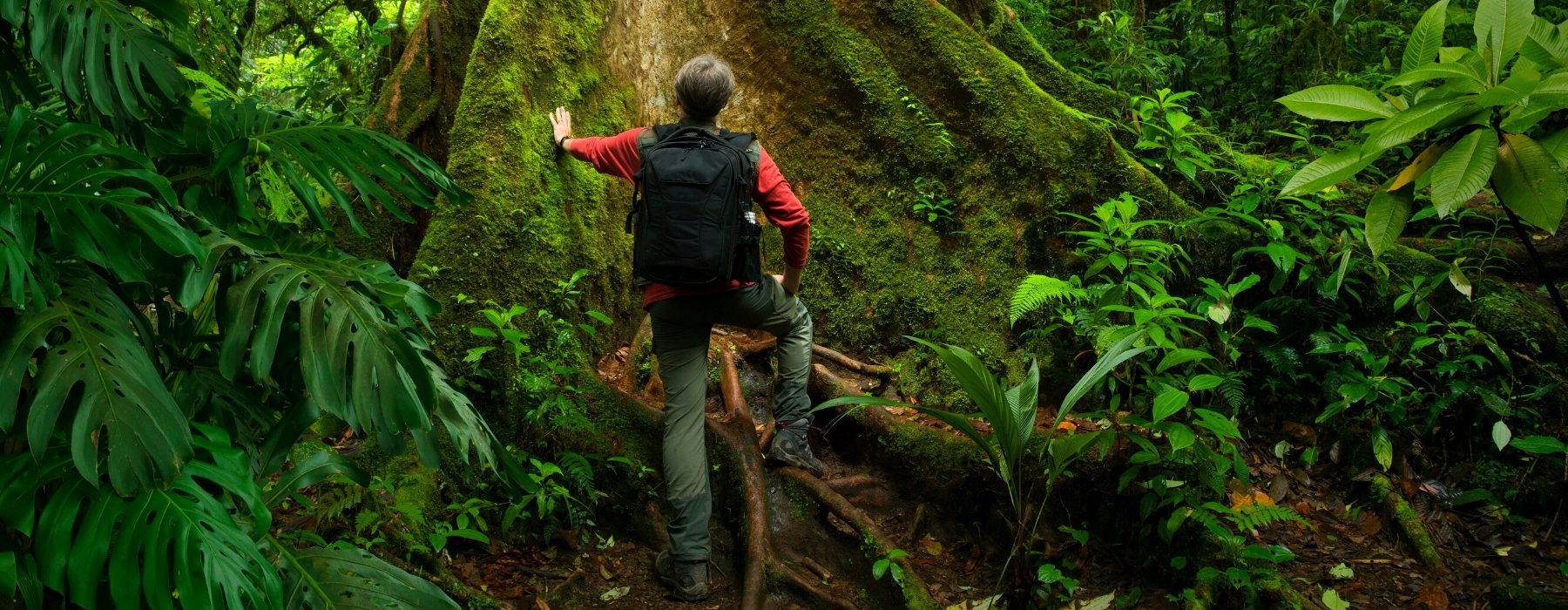
Chaque séjour de Andean Great Treks a été soigneusement planifié et conçu par nos spécialistes. Ils s’appuient sur leur propre expérience de voyage et sur les conseils et l’expertise de nos partenaires locaux pour créer de superbes vacances. Nos spécialistes s’engagent à rendre chaque aspect fluide et agréable ; ils veulent vraiment s’assurer que les vacances qu’ils créent vous laissent de merveilleux souvenirs durables.
Chaque voyageur Andean Great Treks est accompagné d’un guide expérimenté, vous serez immergé dans des villes historiques, des ruines antiques et des paysages inconnus, tous animés par nos guides locaux soigneusement sélectionnés. Ils veulent partager leur expertise et vous aider à faire vos propres découvertes aussi ; leur seule mission est de vous faire profiter de chaque instant.
Vous donnant la liberté de rendre vos vacances encore plus mémorables. Nous savons à quel point nos clients attendent leurs vacances avec impatience et nous sommes fiers du choix et de la flexibilité que nous offrons pour améliorer chaque aspect de votre expérience. Qu’il s’agisse de vous rendre à l’aéroport, de surclasser votre chambre ou de réserver une excursion supplémentaire, nous pouvons vous aider.
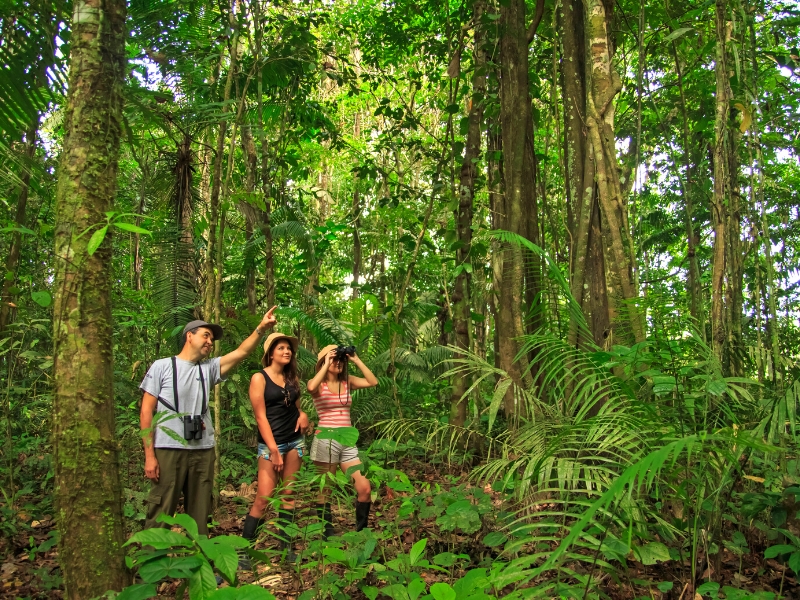
Nos guides sont très professionnels; ce sont leurs connaissances, leur passion et leur expertise inégalées qui transformeront votre expérience de visite de bonne à vraiment extraordinaire !
Parce qu’ils ont grandi dans la région et la connaissent comme leur poche, ils peuvent donc vous aider à découvrir les aspects qui vous intéressent le plus. Ils sont passionnés par le partage de leur coin du monde avec vous, et au fur et à mesure que vous explorez ensemble, ils vous ouvriront les yeux sur les détails complexes, fourniront un contexte pour améliorer votre compréhension de ce que vous voyez et partageront des histoires qui apporteront tout à la vie.
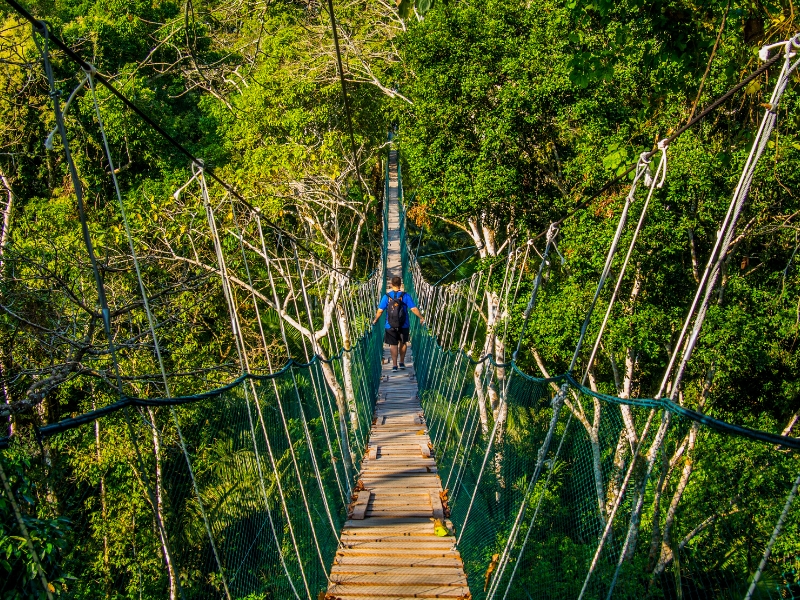
« Votre inspiration pour un voyage peut être un simple mot ou un plan très élaboré, mais ce sont les conversations que nous avons qui nous aident à comprendre l’expérience que vous recherchez. En attendant, je repense au temps que j’ai passé à destination. Lorsque vous commencerez à partager vos idées avec votre spécialiste, cela les reliera immédiatement à une époque de leurs propres voyages. Conjurant une image du temps de repos, ils ont fait la même découverte, leur rappelant ce qu’ils ressentaient.
Votre spécialiste comprend que, lorsque le voyage est bon, il a le pouvoir d’exciter vos émotions de la manière la plus profonde après tout, c’était l’effet sur eux.Ils transportent une boîte au trésor de moments, capturés au cours de nombreux voyages, dans chaque suggestion. ils partageront avec vous, car ils vous demanderont comment vous voulez vous sentir pendant votre voyage.
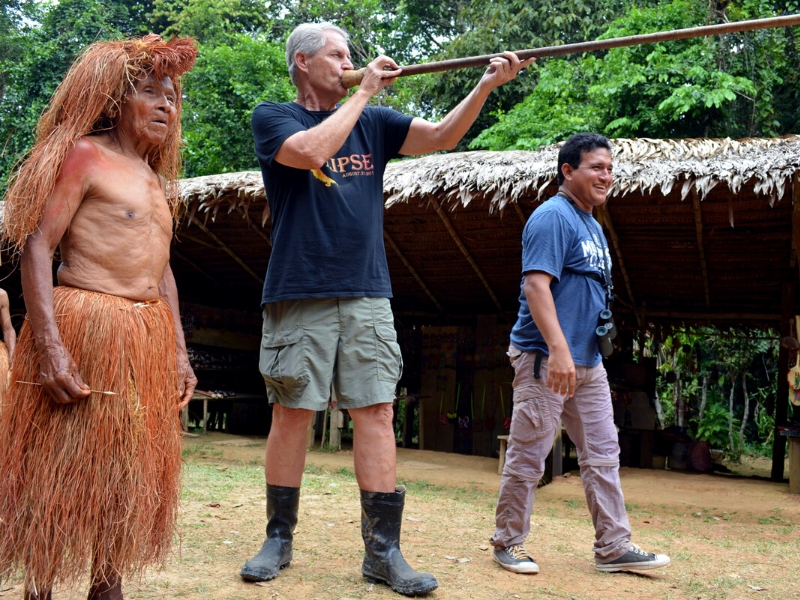
DES EXPÉRIENCES QUI VOUS APPELLENT
C’est ce que vous faites dans une destination qui contribue à lui donner vie. C’est pourquoi nous nous efforçons de choisir des expériences qui vous aident à vous connecter à un lieu, absorbant un peu de son caractère complexe. Quelles que soient vos passions, nous vous recommanderons des expériences qui vous parlent et nous vous recommanderons le guide ou l’expert local le plus qualifié pour vous aider à explorer. Emballez vos vacances avec des expériences spéciales signifie des départs matinaux et de longues journées, mais vous pouvez être sûr que vous reviendrez chez vous avec de nombreux souvenirs incroyables ! Lisez nos circuits et vérifiez les évaluations physiques pour voir si le rythme et les niveaux d’activité vous conviennent.

HÉBERGEMENTS AVEC DIFFÉRENCE
Nous savons que l’endroit où vous séjournez est une partie précieuse de vos voyages. Nous nous efforçons donc de trouver des lieux de séjour qui dépassent les attentes ou vont au-delà de l’ordinaire, que ce soit dans leur caractère, leur hospitalité ou leur emplacement. Au fil des ans, nous avons découvert les meilleures propriétés, les essayant et les testant, afin de pouvoir choisir celle qui vous convient le mieux. Nous avons nourri des relations de longue date avec ces établissements et les personnes qui les ont fondés, et nous y avons séjourné de nombreuses fois, nous saurons même quelles chambres ont les meilleures vues (et vous les réserverons).
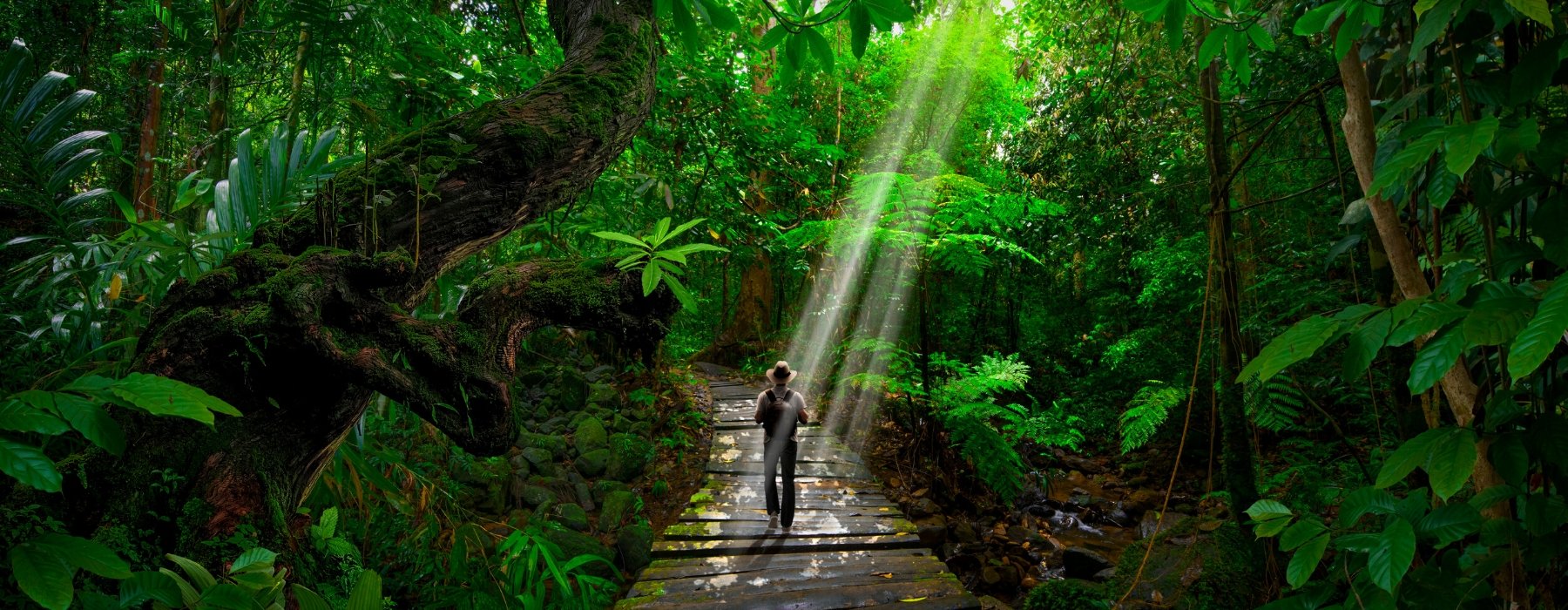
Notre style de voyage – authentique, réfléchi et axé sur l’établissement de liens significatifs avec les personnes et les lieux que vous visitez – est intrinsèquement respectueux et attentif aux destinations que nous aimons. Nous concevons chaque aspect de votre voyage exactement comme vous le souhaitez, ce qui inclut sa durabilité. Cela peut signifier choisir un voyage en train au lieu d’un vol, séjourner dans des lodges écologiques pour la faune ou opter pour des expériences qui redonnent aux communautés que vous visitez. Le choix t’appartient.
Le voyage responsable a toujours été au cœur de ce que nous faisons. D’abord et avant tout, parce qu’il vous offre la meilleure expérience, mais aussi parce qu’il contribue à préserver les communautés et les paysages que vous visitez. Ce n’est pas nouveau pour nous, nous avons collaboré avec des communautés locales et des experts externes afin de devenir de meilleurs ambassadeurs.
Les expériences les plus authentiques et les plus intéressantes profitent souvent directement aux populations locales. Nous préférons acheter des produits locaux qui sont produits dans les fermes biologiques de la Vallée Sacrée, nous avons également des alliances avec des organisations artisanales locales qui nous fournissent des articles souvenirs pour nos clients, votre argent profite directement à l’économie locale.
Notre style de voyage – authentique, réfléchi et axé sur l’établissement de liens significatifs avec les personnes et les lieux que vous visitez – est intrinsèquement respectueux et attentif aux destinations que nous aimons. Nous concevons chaque aspect de votre voyage exactement comme vous le souhaitez, ce qui inclut sa durabilité. Cela peut signifier choisir un voyage en train au lieu d’un vol, séjourner dans des lodges écologiques pour la faune ou opter pour des expériences qui redonnent aux communautés que vous visitez. Le choix t’appartient.
Le voyage responsable a toujours été au cœur de ce que nous faisons. D’abord et avant tout, parce qu’il vous offre la meilleure expérience, mais aussi parce qu’il contribue à préserver les communautés et les paysages que vous visitez. Ce n’est pas nouveau pour nous, nous avons collaboré avec des communautés locales et des experts externes afin de devenir de meilleurs ambassadeurs.
Les expériences les plus authentiques et les plus intéressantes profitent souvent directement aux populations locales. Nous préférons acheter des produits locaux qui sont produits dans les fermes biologiques de la Vallée Sacrée, nous avons également des alliances avec des organisations artisanales locales qui nous fournissent des articles souvenirs pour nos clients, votre argent profite directement à l’économie locale.
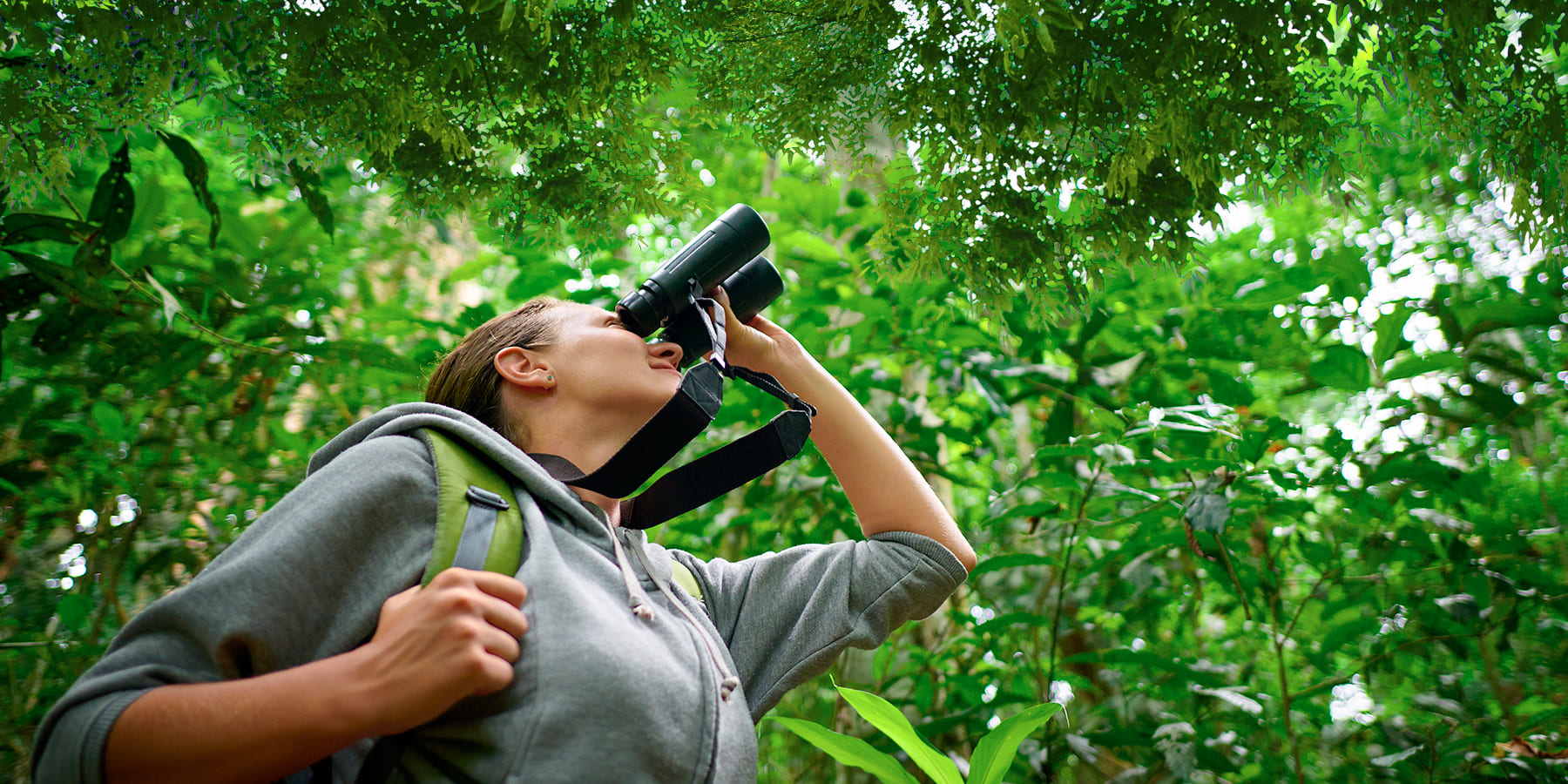
« Il y a un dicton : nous n’héritons pas la Terre de nos ancêtres, nous l’empruntons à nos enfants. Lorsque nous vous montrons notre pays, cette philosophie guide tout ce que nous faisons. Il est de notre responsabilité de préserver l’environnement et la faune, et de soutenir les communautés. Cela signifie utiliser des modes de transport plus lents, comme le vélo, employer des personnes locales et travailler avec les communautés qui bénéficieront directement de votre visite. Cela vous donne également l’impression la meilleure et la plus authentique des lieux que nous voulons partager avec vous.
Nous préférons acheter des produits locaux dans des sacs écologiques, pour éviter l’utilisation de sacs en plastique, de même nous enseignons l’utilisation de savons et de produits écologiques dans chaque tour que nous organisons. Nous travaillons également sur des projets de reboisement avec les communautés locales qui prennent soin des ressources paysagères telles que les réserves communales, les parcs nationaux.
« Il y a un dicton : nous n’héritons pas la Terre de nos ancêtres, nous l’empruntons à nos enfants. Lorsque nous vous montrons notre pays, cette philosophie guide tout ce que nous faisons. Il est de notre responsabilité de préserver l’environnement et la faune, et de soutenir les communautés. Cela signifie utiliser des modes de transport plus lents, comme le vélo, employer des personnes locales et travailler avec les communautés qui bénéficieront directement de votre visite. Cela vous donne également l’impression la meilleure et la plus authentique des lieux que nous voulons partager avec vous.
Nous préférons acheter des produits locaux dans des sacs écologiques, pour éviter l’utilisation de sacs en plastique, de même nous enseignons l’utilisation de savons et de produits écologiques dans chaque tour que nous organisons. Nous travaillons également sur des projets de reboisement avec les communautés locales qui prennent soin des ressources paysagères telles que les réserves communales, les parcs nationaux.
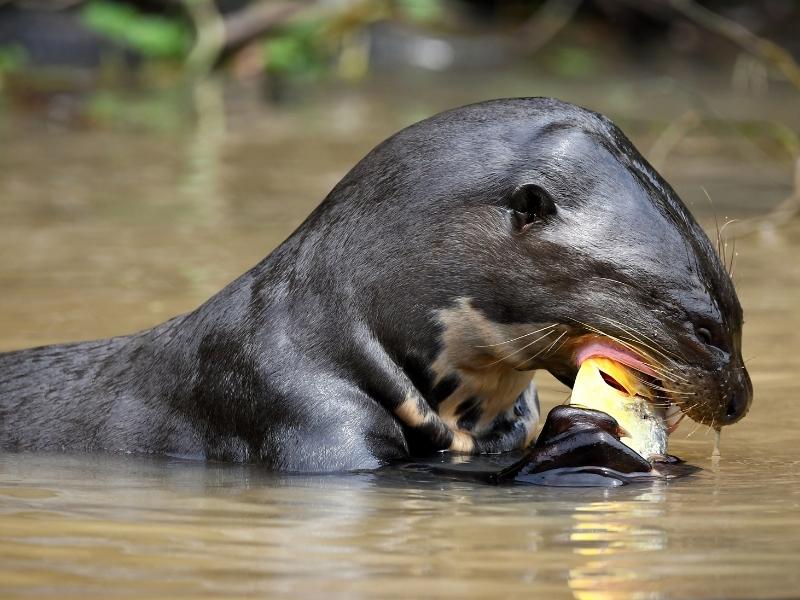
Découvrez la majestueuse forêt amazonienne du parc national de Manu. Cette zone protégée se trouve au Pérou, c'est l'un des plus grands écosystèmes de la planète, en raison de sa grande diversité d'oiseaux, d'insectes, de plantes et de mammifères.


Ce voyage vous permet de vivre l'une des meilleures expériences dans le parc national de Manu qui comprend la zone réservée en seulement 7 jours. C'est un moyen idéal de découvrir la culture et les traditions des communautés locales et de voir les espèces distinctes d'animaux et d'oiseaux qui habitent ici.

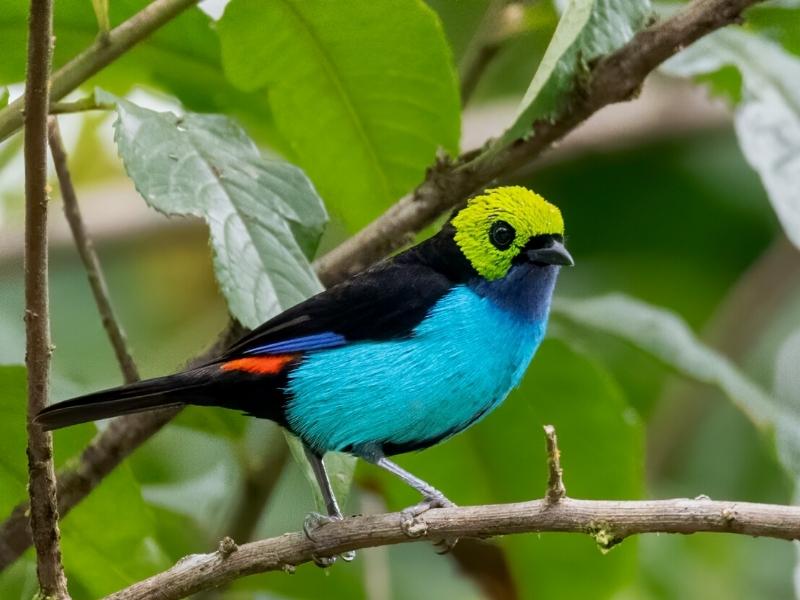
Le parc national de Manu est situé dans la jungle amazonienne du Pérou. Cette attraction est l'un des rares endroits sur la planète qui conserve encore sa grande biodiversité d'oiseaux, de mammifères, de reptiles et de nombreuses plantes médicinales.
